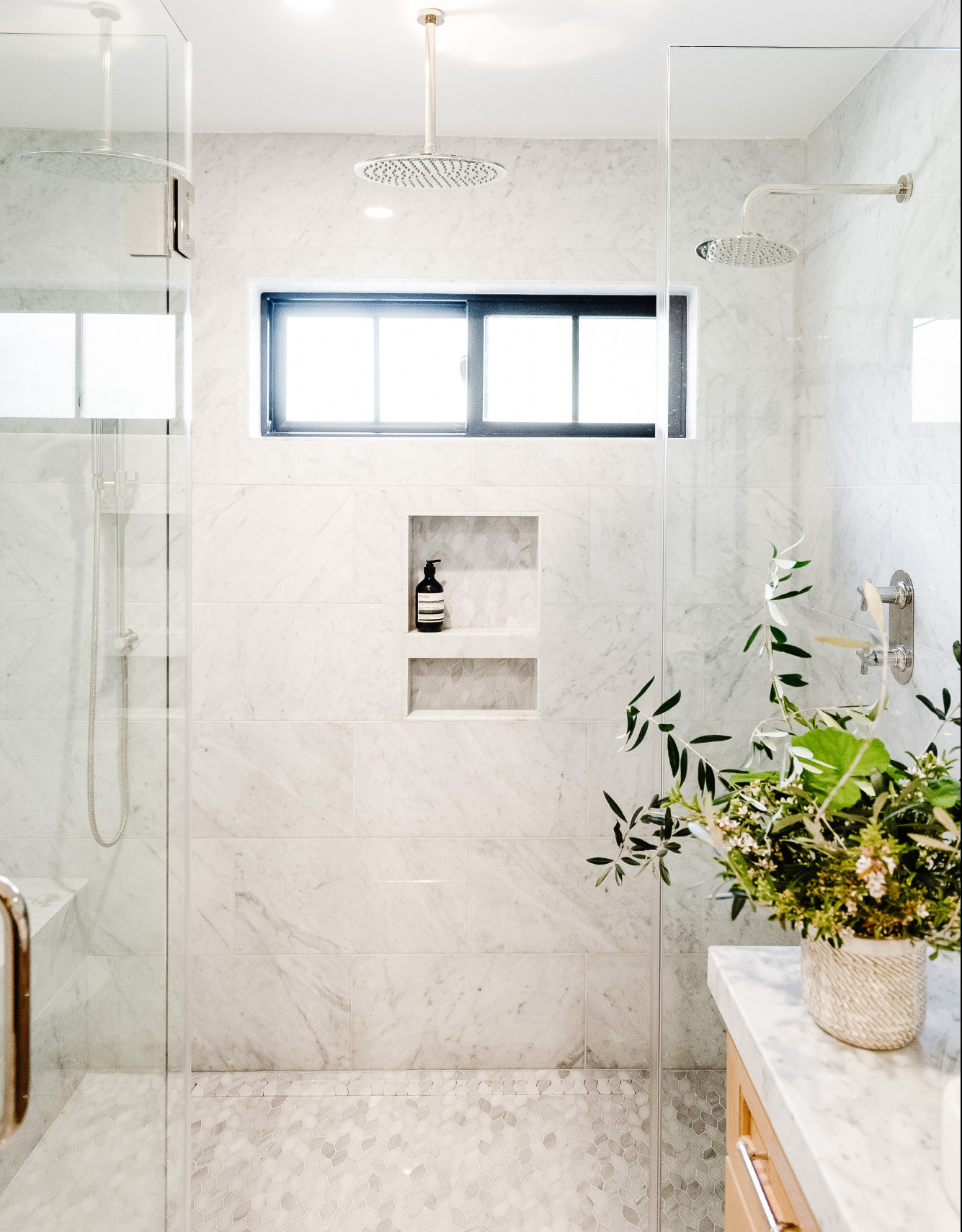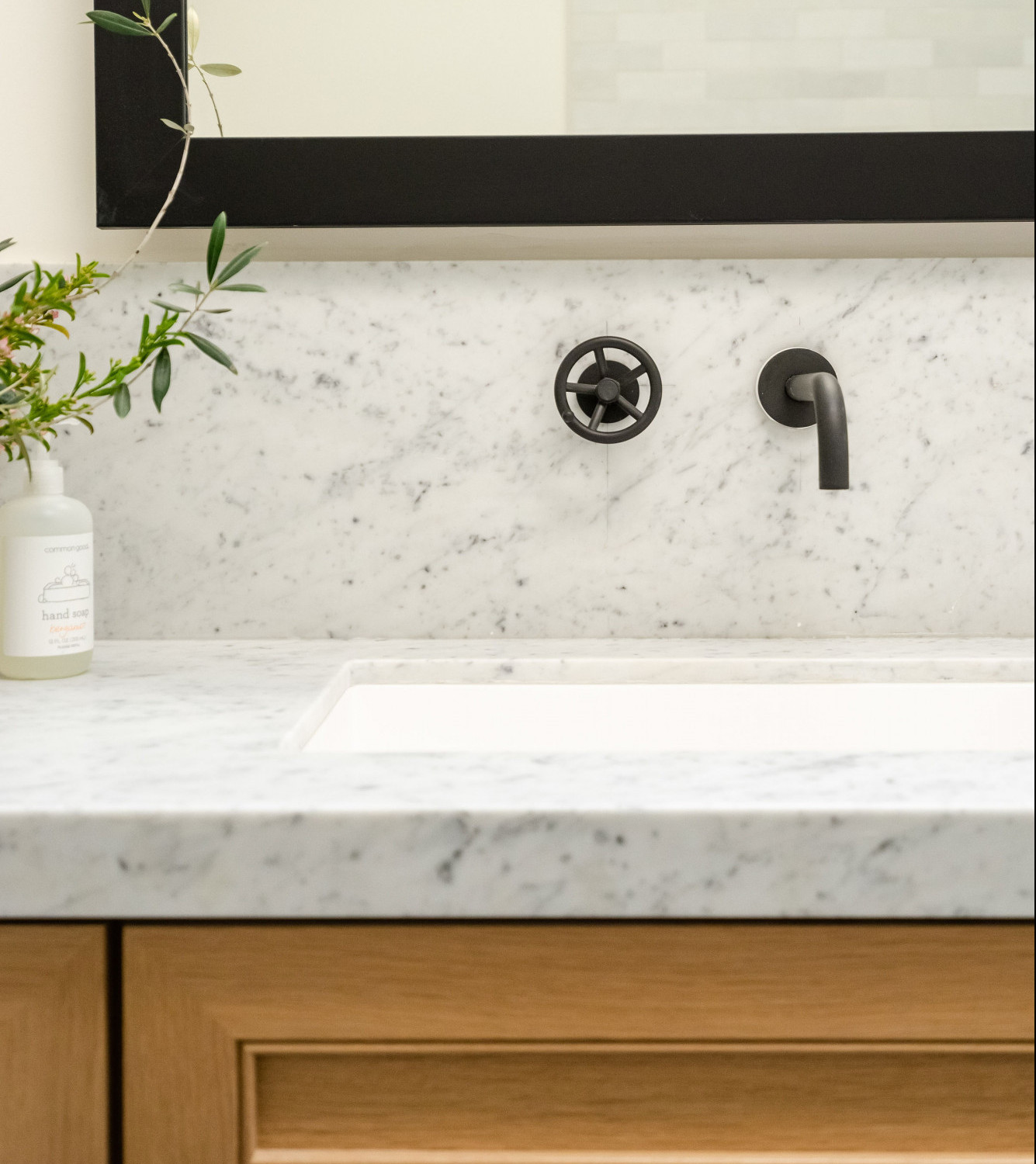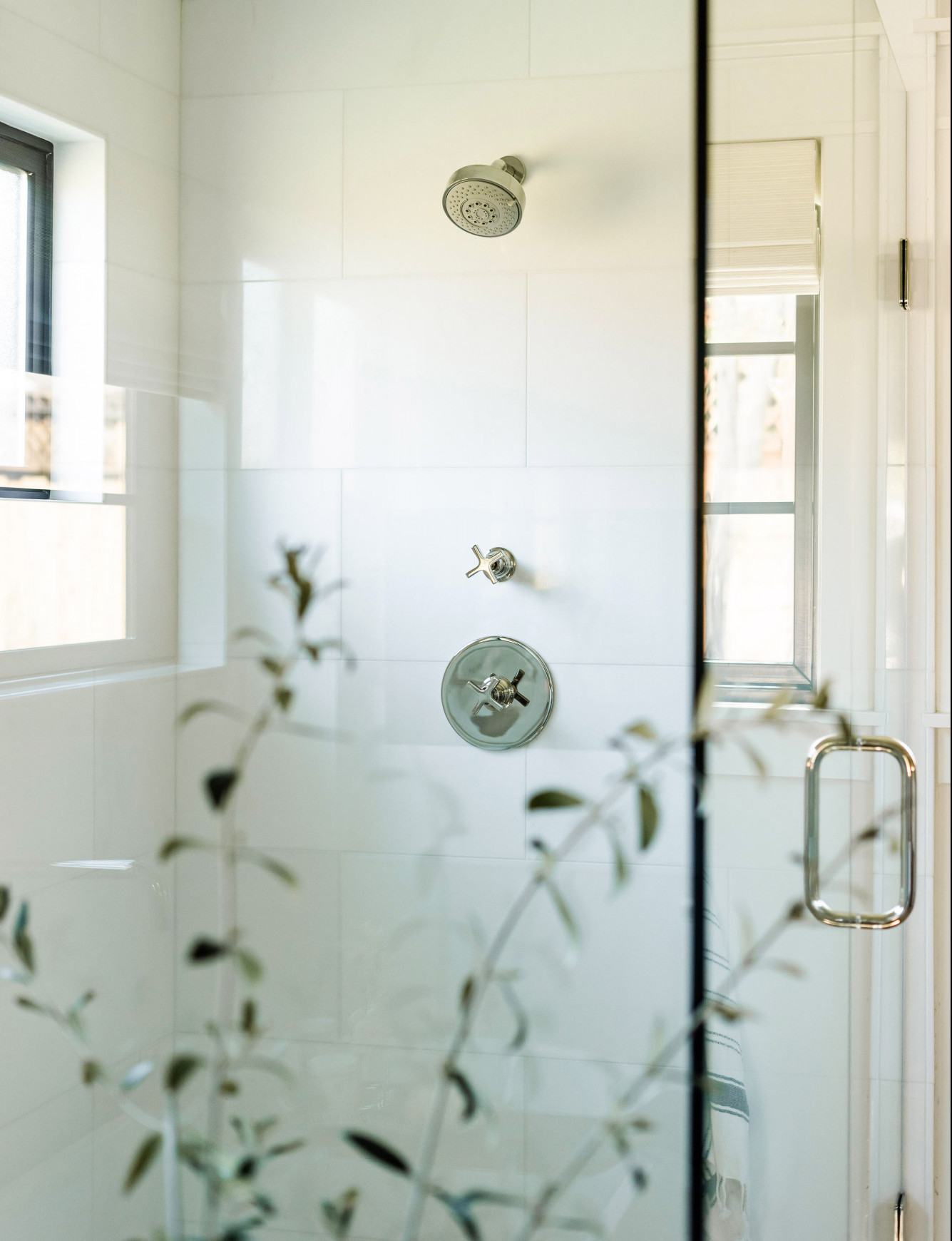
I’ll be honest, the first time I had to purchase plumbing fixtures for a remodel, I was unsure I was doing it right! I was bombarded with questions like, “Do you know what type of shower valve you want? Pressure Balance? Thermostatic?” and had to make sure everything would pass a California inspection, which apparently changes things quite a bit! If you are thinking of starting a bathroom remodel, I want to share with you some terms you will come across when picking out your plumbing fixtures, as well as tips to make the process easier.
T’s Tip: When you arrive to your local plumbing showroom, it’s best to have an appointment booked with a representative. Having an idea of the style you want and budget you have will save everyone time during your appointment. Don’t have an idea where to start? Book a consultation appointment with me and I would be happy to help!

Valve Terminology:
- Rough In Valve: This is the valve that works with the faucet system you purchase. You will need this immediately, even if the plumbing fixture (i.e the shower head) does not arrive for weeks. This is the part you give to your plumber so he can stub out your plumbing lines correctly before you close up your walls and tile.
- Pressure Balance Valve: “A pressure-balance valve features just one handle controlling both volume and temperature…Always keep in mind that a pressure-balance valve doesn’t pay attention to temperature, so with the valve set at maximum temperature, and the handle turned all the way to “hot”, the water coming out of the shower will be as hot as the water heater has to offer “
- Thermostatic Valve: “Thermostatic valves have two handles: one controlling the volume, one for the water temperature…The advantage with thermostatic valves is the direct control over output temperature” – Plumbing Supply.com
- Diverter: Many people want a rain shower or a handheld shower head these days. In order to switch where the water flows to, you need a diverter valve installed. This is required to pass inspection in California.
- Trim Kit: this refers to the visible part of your plumbing fixture. It is often the shower faucet and handle that you see in the shower or bath.
Faucet Location Terminology:
- Widespread: You will need to drill three holes in your countertop to accommodate two levers and the faucet.
- Single Hole: You will only need to drill one hole in your counterop, as the lever is attached to the faucet.
- Wall-Mounted: Affixed to you wall instead of your countertop, it is higher up and you need to stub out your plumbing line accordingly.
- Vessel: A very tall faucet to accommodate a top mounted, vessel sink (see below sink terminology).
- Waterfall: A faucet that shows the water coming out in a “waterfall” effect.

Sink Location Terminology:
- Undermount: This is your standard sink that you see underneath your countertop. Undermount sink plumbing pipes take up more room underneath your counter/in your vanity. Remember, your sink dimensions are very important when you are customizing your vanity!
- Vessel: A vessel sink sits atop your countertop and is much higher than an under mount sink. Though they are not great for children, they are beautiful in a master bath. There are many vessel sink options, such as a bowl or a slightly rectangular top mounted sink.
California Compliance:
California holds certain water flow regulations. Because of this, your toilet output and faucet outputs must meet California requirements to pass inspection. One thing to note is that you will not be able to run your rain shower at the same time you run your normal shower head as that is too much water output. You will need to install a diverter and choose which faucet you want running in order to pass inspection. This is the most common item I have to share with my bathroom remodel clients!
- Toilets: “Effective January of 2016, the California Energy Commission (CEC) required that all new toilets sold in the state have a consumption of 1.28 gallons per flush or even less”.
- Faucets: “Maximum flow rate is 1.8 gallons per minute.” source
This was a lot to take in, but you did it! Don’t feel like remembering all of this? Schedule your appointment with me today for your bathroom remodel!


